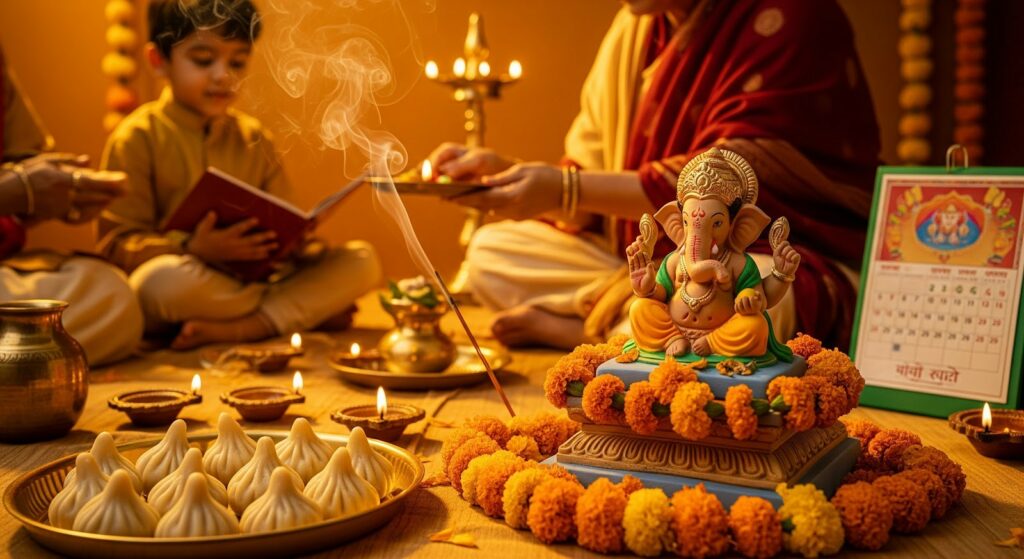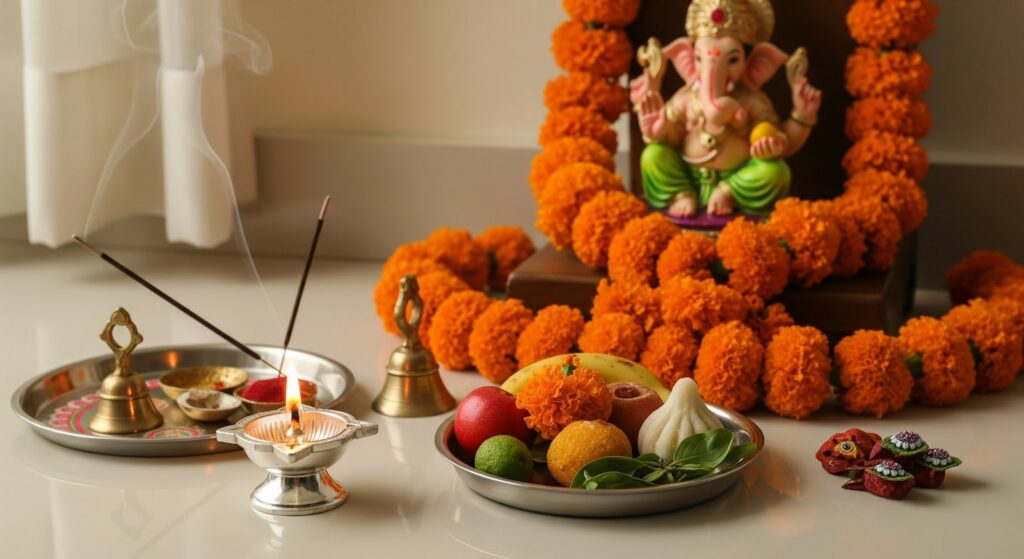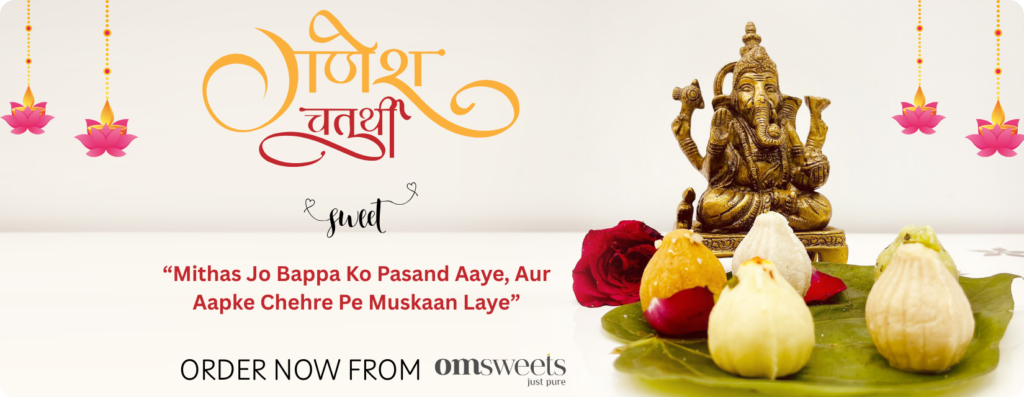Ganesh Chaturthi. Just saying the name brings a rush of sounds to my mind—the rhythmic beat of dhols, the chants of “Ganpati Bappa Morya!” echoing through the streets, and somewhere in the background, the soft hiss of modaks gently steaming in the kitchen. For me and for millions across India this isn’t just another Hindu festival. It’s an emotional anchor. A homecoming.
But lately, I’ve found myself pausing to ask: Why do we celebrate Ganesh Chaturthi? Where did it all begin? What do these rituals mean, really? And in today’s world of speed, noise, and endless screens, what place does a deity with an elephant head hold in all this chaos?
This isn’t my attempt at a mythological deep dive or a religious guidebook. It’s more of a heartfelt journey through the origins, the symbols, and the quiet, enduring spirit that gives Ganesh Chaturthi its soul.
The Backstory: Of Clay, Love, and a Severed Head
Let’s begin where all good stories do with a mother’s intention.
Goddess Parvati, they say, fashioned a boy out of sandalwood paste while bathing, breathing life into him with maternal force. This boy, Ganesha, was given a simple duty: to guard the door and let no one in.
Unfortunately, the one person he barred entry to was Lord Shiva, Mata Parvathi’s husband. A divine misunderstanding escalated into conflict, and in a fit of fury, Shiva severed the boy’s head. The aftermath? Shock, grief, and a restoration unlike any other: the head of a wise elephant was placed upon the child’s body, and so began Ganesha’s legend.
Depending on the region—Tamil Nadu, Maharashtra, or Bengal the tale takes on slight variations. But the soul remains: a child born of love, touched by wrath, and revived with wisdom. It’s a story that’s oddly comforting, beautifully messy, and timelessly human.
When is Ganesh Chaturthi in 2025?
For me, planning ahead brings a sense of anticipation. Ganesh Chaturthi in 2025 falls on Wednesday, August 27. The Chaturthi tithi begins on August 26 at around 1:54 PM and ends on August 27 at about 3:44 PM. This timing is especially important for setting up the murti and beginning formal worship rites.
Growing up, I always associated Ganesh Chaturthi with Maharashtra. There’s something magical about how the festival comes alive, there huge pandals, community aartis, dhol-tasha processions that pulse through the streets. Even if you don’t live in the state, it’s the kind of celebration that pulls you in. I know people who make it a point to travel to Mumbai or Pune every year just to witness the grandeur, the devotion, the energy that feels impossible to describe unless you’ve felt it for yourself.
That’s the power of this festival. It’s not just marked on calendars it’s something we feel in our bones.
Rituals: More Than What Meets the Eye

Ganesh Chaturthi’s rituals may look grand, but they’re deeply intimate when practised with intent.
Murti Sthapana
Bringing the idol home isn’t decorative it’s symbolic. Ganesha arrives like a beloved guest. His presence, believed to remove blocks, mental, emotional, and even physical prepares both home and heart for renewal.
Pranapratishtha
A ritual that is more spiritual than performative. It’s the act of inviting life into the clay form a whisper of the divine into matter.
Daily Aartis & Naivedyam
Morning and evening, families gather around Ganesha, offering songs, flowers, sweets. No ritual is complete without modaks steamed dumplings with jaggery and coconut, said to be his favourite. Durva grass, red hibiscus, and banana leaves also find a place humble, yet deeply sacred.
Ganesh Visarjan
The farewell procession. Loud, teary, chaotic, and joyful all at once. The immersion of the idol into water marks the end, reminding us that even the divine has a beginning and an end only to return again.
What Ganesha’s Form Teaches Us Without Saying a Word
Ganesha’s image is rich in layered meaning. It’s not mere design—it’s instruction.
- Large head: Think big, absorb more
- Small eyes: Notice the subtle
- Large ears: Listen more than you speak
- Trunk: Strength and sensitivity, co-existing
- Broken tusk: Imperfection doesn’t dilute divinity
- Big belly: Life is to be digested, not just lived
The symbolism isn’t metaphysical fluff—it’s practical wisdom. We are invited to become more like him: balanced, aware, kind, and rooted.
Modern Chaturthi: Still Sacred, Just Evolved

In the bustling urban sprawl, not everyone has the time for elaborate rituals or the space for processions. Yet, Ganesh Chaturthi adapts. It breathes through apartment balconies, community WhatsApp groups, eco-friendly celebration kits, and even Zoom aartis.
Conscious Celebrations
Gone are the days of plaster idols and synthetic garlands. More and more families now opt for clay murtis, natural dyes, and bucket visarjan. What once was environmental oversight is now an act of responsibility. And yes, Bappa approves.
Local Economy & Cultural Crossroads
From flower-sellers and sweet-makers to artisans and tabla players, the festival fuels more than faith, it nourishes livelihoods. It creates a pause in the year when people gather, not to shop or scroll, but to truly pause and be
Why Ganesh Chaturthi Still Matters
Because life doesn’t come without obstacles. Because fresh starts don’t announce themselves. And because sometimes, we all need a reminder that wisdom doesn’t always come with age or status—it might just arrive on a mouse, with a modak in hand.
Ganesha, in his many forms, reminds us:
- To start before we’re ready
- To hold space for joy and reverence simultaneously
- To say goodbye with grace, not fear
Conclusion: Not Just a Festival, But a Feeling
So, why do we celebrate Ganesh Chaturthi?
We do it to remember stories that are older than empires.
To practise devotion, not perfection.
To welcome a god who isn’t intimidating, but endearing.
And to gather, year after year, around a figure who listens quietly and leaves gently.
If there’s one thing this festival teaches us, it’s this: Life is fleeting. But the spirit? That stays. So make it count.
FAQs
How long does Ganesh Chaturthi last?
Typically 10 days, though many families do 1.5, 5, or 7-day celebrations depending on tradition.
What are the most common offerings?
Modaks (steamed or fried), durva grass, red flowers, jaggery, banana, and coconut.
Why do we do visarjan?
It signifies letting go. The idol dissolves, but the blessing remains. It mirrors life: everything we hold dear must one day be released.
Can I celebrate in an eco-conscious way?
Absolutely. Choose clay idols, natural colours, DIY decorations, and avoid synthetic garlands and plastic.
Is Ganesh Chaturthi a public holiday?
Yes, in many states, including Maharashtra, Goa, and parts of southern India.
What are typical festival foods?
Besides Modak, you’ll find puran poli, kesar sheera, sabudana khichdi, laddoos, and moong dal khichdi depending on the region.
Read More:


